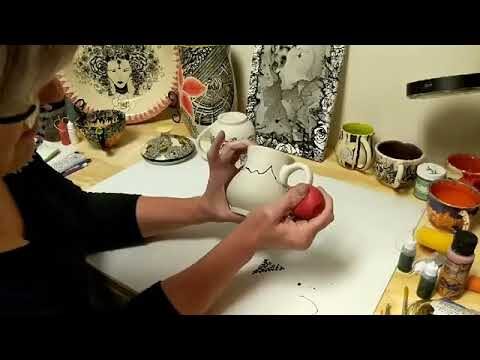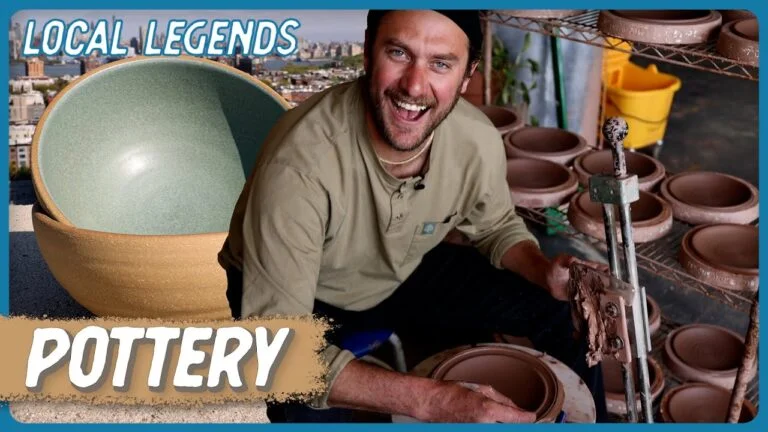Functional pottery techniques have been honed and perfected over centuries, resulting in a diverse array of beautiful and practical ceramics. From hand-building to wheel-throwing, these techniques allow artists to create everything from mugs and bowls to vases and plates. In this article, we will explore the fascinating world of functional pottery techniques, delving into the history, methods, and creative possibilities of this timeless art form. Whether you’re a seasoned potter or a curious beginner, prepare to be inspired by the endless potential of functional pottery.
What does functional pottery refer to?
Functional pottery refers to pottery that is designed with a specific purpose in mind, such as eating, drinking, or storing items. It is not just meant to be decorative, but rather to serve a practical function in everyday life. Potters often consider the form and function of their pieces, ensuring that they are not only visually appealing but also useful in their intended use.
What are the three basic pottery techniques?
If you’re looking to get into pottery, the three basic techniques you should start with are pinch, coil, and slab construction. These methods can be used separately or in combination, offering endless creative possibilities. For beginners, creating a pinch pot is a great way to get started, simply by kneading the clay into a small lump and shaping it with your fingers. With these foundational techniques, the possibilities are endless for creating unique and beautiful pottery.
What distinguishes functional pottery from non-functional pottery?
Functional pottery serves a practical purpose, such as holding food or water, while non-functional pottery is often created as decorative art. Functional ceramics are designed to be used and are typically made with durability in mind, while non-functional ceramics are more focused on artistic expression and may not serve a practical purpose.
Whether it’s a mug for your morning coffee or a sculpture for your living room, the distinction between functional and non-functional pottery lies in its intended use. Functional pottery is designed for everyday use, while non-functional pottery is created for aesthetic enjoyment. Both types showcase the artist’s skill and creativity, but their purpose sets them apart.
Perfecting Your Craft: Master the Essential Techniques
Are you looking to take your skills to the next level? With our comprehensive guide, you can perfect your craft and master essential techniques that will set you apart from the rest. Whether you’re a seasoned professional or just starting out, our tips and tricks will help you hone your abilities and elevate your work to new heights.
From mastering the basics to delving into advanced techniques, our guide covers everything you need to know to become a true expert in your field. With step-by-step instructions and practical advice, you’ll be able to refine your skills and achieve the level of mastery you’ve always dreamed of. Perfecting your craft is not just about talent, it’s about dedication and continuous learning – and with our help, you’ll be well on your way to success.
Don’t settle for mediocrity when you have the potential to be extraordinary. By investing in yourself and committing to mastering essential techniques, you’ll be able to reach your full potential and stand out in a crowded market. Take the first step towards perfection today and start your journey towards becoming a true master in your craft.
Functional Pottery Mastery: Key Techniques for Success
Unlock your potential and elevate your skills with Functional Pottery Mastery: Key Techniques for Success. Dive into the world of pottery with confidence as you learn essential techniques that will take your craft to the next level. From mastering the art of throwing to perfecting glazing and firing, this comprehensive guide will equip you with the knowledge and expertise needed to create stunning and functional pieces that truly stand out.
Discover the secrets of successful pottery making and unleash your creativity like never before. Whether you are a beginner looking to build a solid foundation or an experienced potter seeking to refine your skills, Functional Pottery Mastery offers valuable insights and practical tips to help you achieve your artistic goals. With step-by-step instructions and expert advice, this book is your ultimate companion on the journey to becoming a master potter.
Essential Tips for Mastering Functional Pottery
Are you looking to improve your functional pottery skills? Look no further! Here are three essential tips to help you master the art of functional pottery. First, focus on mastering the basics. Start by perfecting your throwing technique and mastering the art of centering clay on the wheel. This strong foundation will set you up for success as you move on to more advanced forms and techniques.
Next, experiment with different glazes and firing techniques to add depth and character to your pieces. Don’t be afraid to try new things and push the boundaries of traditional pottery techniques. By exploring different glazes and firing methods, you can create unique and eye-catching pieces that stand out from the crowd.
Lastly, practice regularly and seek feedback from experienced potters. Join a pottery class or workshop to hone your skills and learn from others in the community. By immersing yourself in the world of pottery and surrounding yourself with fellow artists, you can continue to grow and improve your craft. Remember, mastering functional pottery is a journey, so enjoy the process and embrace the challenges along the way.
Incorporating a mix of traditional and contemporary techniques, functional pottery artists are able to create beautiful, yet practical pieces that serve both aesthetic and utilitarian purposes. By experimenting with various clay bodies, glazes, and firing methods, these artisans continue to push the boundaries of what is possible within the realm of functional pottery. Whether it be hand-building, wheel throwing, or sculpting, the dedication and skill required to master these techniques is evident in the exquisite craftsmanship of each unique piece. As functional pottery continues to evolve and adapt to modern tastes, it remains a timeless art form that bridges the gap between form and function, beauty and usefulness.



